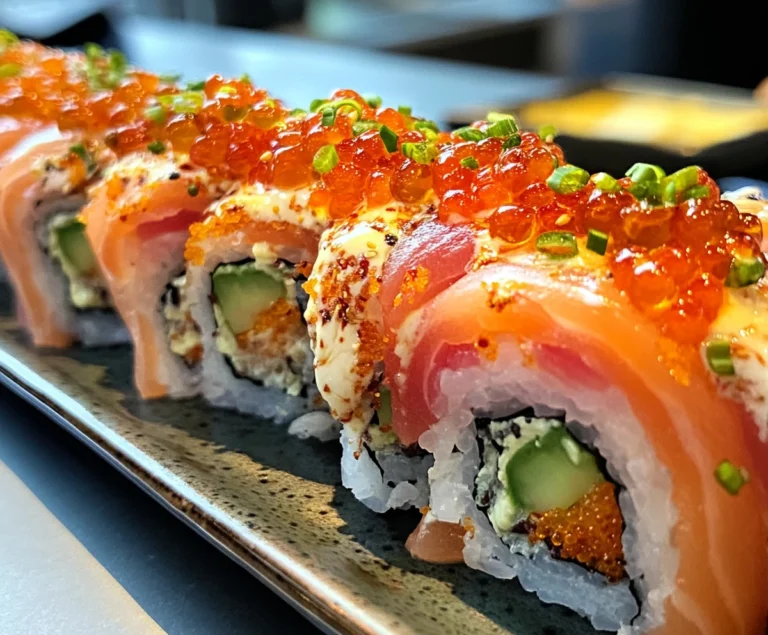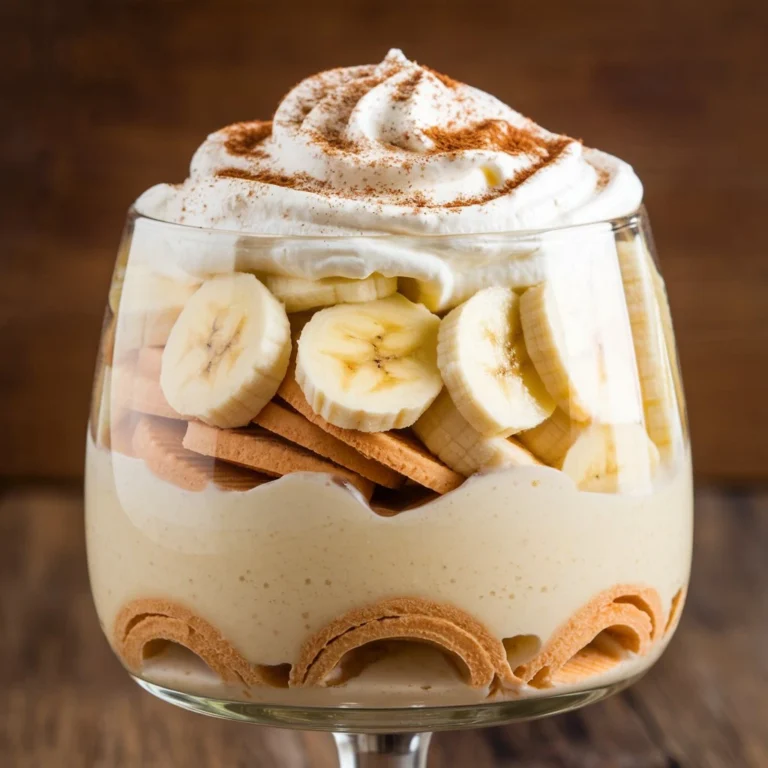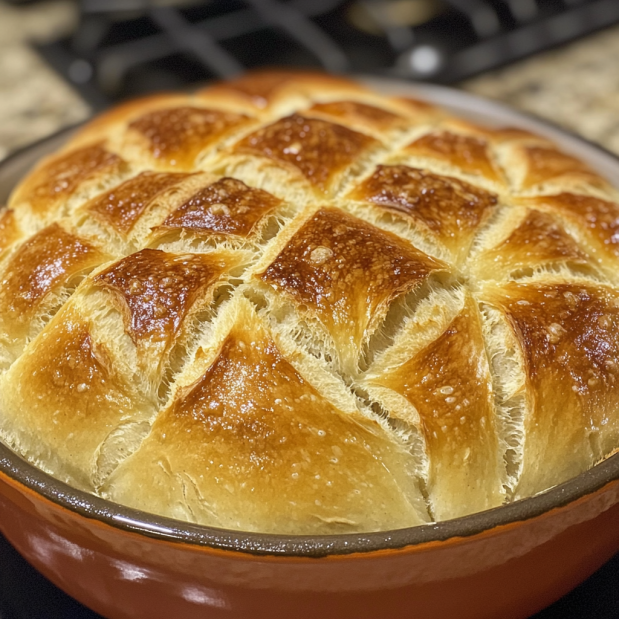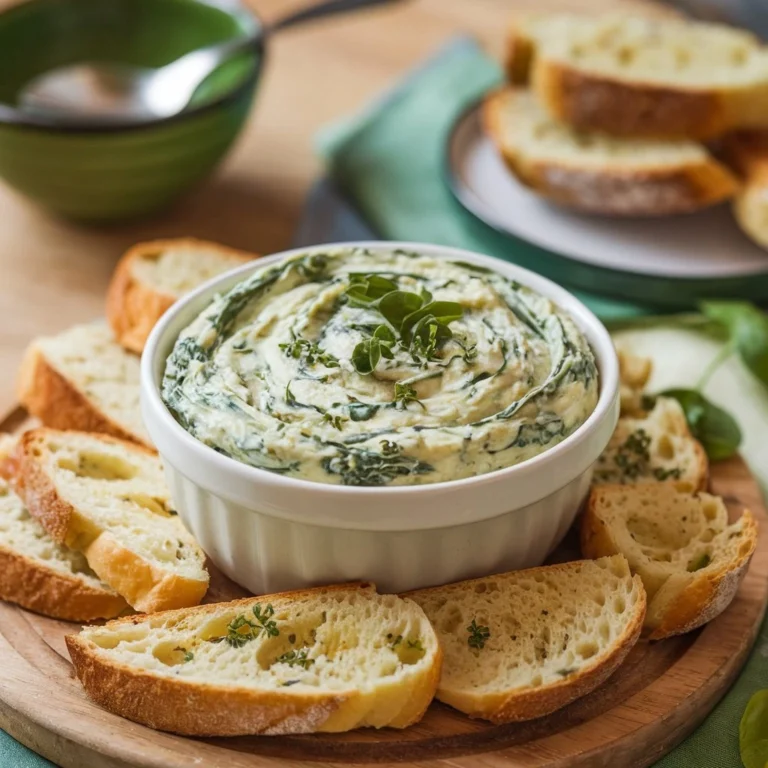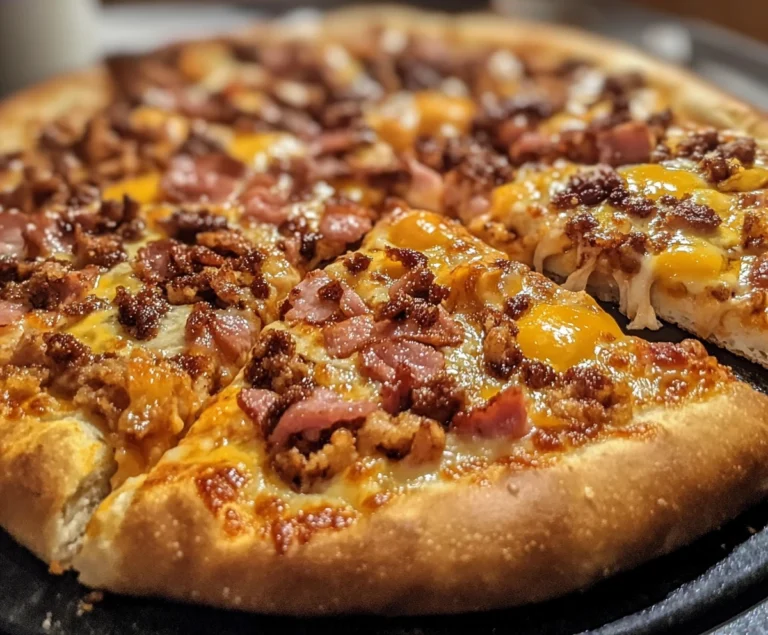Why Is My Chicken Rubbery in the Crockpot?
Cooking chicken in a Crockpot can be an effortless and convenient way to prepare a hearty meal, but one of the most common complaints from home cooks is ending up with rubbery or chewy chicken. Instead of the juicy, tender bites you expect, you’re faced with dry, tough meat. If you’ve found yourself asking, “Why is my chicken rubbery in the Crockpot?” then you’re in the right place. This comprehensive guide will explore the causes, prevention strategies, and solutions to this common cooking problem, helping you create perfectly tender chicken every time.
Chicken should reach an internal temperature of 165°F (74°C) to be safe to eat, as recommended by the USDA.
What Causes Chicken to Become Rubbery in a Crockpot?
Rubbery chicken can result from several factors, many of which are easily avoidable with the right techniques and knowledge. Below, we’ll dive into the main reasons your chicken might turn out with an undesirable texture.
1. Overcooking – The Biggest Culprit
Overcooking is by far the most common reason for rubbery chicken in a Crockpot. The nature of slow cookers allows for extended cooking times, but when it comes to chicken, too much time in the heat can be detrimental.
- What Happens to Chicken When It’s Overcooked?
Chicken, particularly chicken breasts, has a very low fat content compared to other meats like beef or pork. This means that when it’s cooked for too long, the protein fibers tighten, squeezing out moisture. As the liquid evaporates, the meat becomes increasingly dry, tough, and rubbery. Chicken breasts, in particular, are prone to this issue because they lack the fat that can help protect the meat during long cooking processes. - The Science Behind Overcooking
When proteins are exposed to heat, they denature or change shape. This is beneficial up to a certain point, as it kills harmful bacteria and makes the meat safe to eat. However, once you exceed a specific internal temperature (usually around 165°F or 74°C for chicken), the proteins contract too much, squeezing out all the moisture that keeps the meat tender. - Temperature Mismanagement
In many Crockpot recipes, the chicken is set to cook on low for an extended period. While this might be perfect for tough cuts of meat with lots of connective tissue, such as pork shoulder or beef chuck, it’s not ideal for chicken. Exceeding the cooking time or cooking chicken at too high a temperature can turn what should be a juicy dish into rubbery chicken.
2. Cooking on the Wrong Setting: High vs. Low
The settings on your Crockpot play a significant role in how your chicken turns out. Most Crockpots have at least two settings—high and low—and choosing the wrong one for your chicken can affect the texture drastically.
- Why Low is Better for Chicken
Cooking chicken on the low setting over several hours allows the heat to slowly penetrate the meat, which helps retain moisture. Chicken breasts, for instance, fare better on a lower setting, as it helps prevent the proteins from over-tightening and losing moisture. Using the high setting may cook the chicken too quickly, which results in drying it out. Overheating is the enemy of juicy chicken. - Balancing Time and Heat
The secret to tender chicken in a Crockpot is balancing time and heat. While it may be tempting to speed up the process by cooking your chicken on high, slow and steady wins the race here. If you’re in a hurry, you might be better off using another cooking method altogether, such as baking or pan-searing, which allows for more controlled cooking times.
How Crockpot Size Affects Cooking Chicken
3. Using a Crockpot That’s Too Big for Your Recipe
One of the lesser-known reasons for rubbery chicken is using a Crockpot that’s too large for the amount of chicken you’re cooking. When your Crockpot is too big, there’s too much space for the moisture to escape, resulting in a loss of liquid that can dry out the chicken.
- Why Size Matters
Crockpots are designed to work best when filled between halfway and three-quarters full. This is because the pot’s capacity plays a role in how evenly the heat is distributed. If the pot is mostly empty, the heat escapes too quickly, and the ingredients inside can become overcooked. Conversely, if the Crockpot is too full, the heat doesn’t circulate properly, which can also affect the cooking time and final texture. - The Ideal Crockpot Size for Chicken Recipes
To avoid this issue, choose a Crockpot size that matches the quantity of food you’re preparing. For example, a 6-quart Crockpot is perfect for cooking a whole chicken or a large batch of chicken thighs. If you’re only cooking a few chicken breasts, consider using a smaller Crockpot or adding extra ingredients like vegetables or broth to help fill the pot and maintain moisture.
4. Too Much Liquid Can Cause Problems
Another common misconception is that adding more liquid will help prevent your chicken from becoming dry. While it’s true that moisture is key to keeping your chicken tender, too much liquid can have the opposite effect in a Crockpot.
- Excess Liquid = Boiling, Not Slow Cooking
When you add too much liquid to your Crockpot, you’re essentially boiling the chicken rather than slow cooking it. Boiling meat can cause it to become tough, as it cooks the proteins too quickly and doesn’t allow the flavors to properly develop. Ideally, you should add just enough liquid to cover the bottom of the Crockpot and create steam, but not so much that the chicken is submerged. - The Role of Steam in Slow Cooking
Slow cookers are designed to trap steam inside, which helps to cook the ingredients evenly and retain moisture. By adding too much liquid, you prevent the steam from doing its job, and instead, the chicken is boiled rather than slowly steamed and simmered in its own juices. This not only leads to a rubbery texture but also can make the chicken flavorless as it loses its natural juices to the excess liquid.
5. Lean Chicken Cuts Can Become Rubbery Faster
The cut of chicken you choose to cook in your Crockpot can also impact the texture. Some cuts are more prone to becoming dry and rubbery than others.
- Why Chicken Breasts are Prone to Drying Out
Chicken breasts are the leanest part of the bird, which makes them a popular choice for healthy meals. However, this also makes them the most susceptible to becoming dry and rubbery. Without the fat found in chicken thighs or drumsticks, chicken breasts have less protection against overcooking and moisture loss. - Chicken Thighs as a Better Alternative
If you’re aiming for a tender, juicy result, you might want to opt for chicken thighs instead. Thighs have more fat and connective tissue, which means they can withstand longer cooking times without drying out. The fat in thighs also adds flavor, which can help enhance your Crockpot meal.
How to Avoid Rubbery Chicken in the Crockpot
Now that we’ve discussed the common causes of rubbery chicken, let’s explore some strategies to prevent this issue and ensure your chicken comes out perfectly every time.
1. Monitor Cooking Time and Use a Thermometer
One of the simplest ways to avoid overcooked, rubbery chicken is to monitor the cooking time closely and use a meat thermometer to check for doneness.
- Follow the Recipe
Slow cooker recipes typically provide a recommended cooking time, and it’s important to stick to that guideline. If your recipe calls for 6 hours on low, resist the temptation to let it cook for 8 hours “just in case.” More time doesn’t always mean better results, especially with chicken. - Use a Meat Thermometer
To avoid overcooking, invest in a meat thermometer. Chicken should be cooked to an internal temperature of 165°F (74°C). Once it reaches this temperature, it’s safe to eat and will still be juicy and tender. Overcooking beyond this point is what causes the proteins to tighten and the meat to become rubbery.
2. Proper Marinating for Tender Chicken
Marinating your chicken before placing it in the Crockpot is another excellent way to ensure it stays tender and flavorful.
- Why Marinating Helps
A marinade made with acidic ingredients such as lemon juice, yogurt, or vinegar helps to break down the protein fibers in the chicken, making it more tender before you even begin cooking. In addition to making the chicken more tender, a marinade also adds flavor, which can elevate the entire dish. - Popular Marinade Ingredients
- Yogurt or buttermilk for tenderness
- Olive oil to retain moisture
- Lemon juice, vinegar, or other acidic components to break down proteins
- Garlic, herbs, and spices for added flavor
- How Long to Marinate
For best results, allow the chicken to marinate for at least 2 hours, or up to overnight. This will give the acids time to penetrate the meat and ensure the most tender outcome. You can also check out this guide on chicken brining techniques from Aurelia Recipes for more in-depth methods of tenderizing your chicken before cooking.
3. Add Fats and Moisture-Retaining Ingredients
Since lean chicken cuts like breasts lack the natural fat that helps keep meat moist, adding fats and moisture-retaining ingredients to your recipe can be a game-changer.
- Why Adding Fat Helps
Adding ingredients like butter, olive oil, or even bacon can introduce the necessary fats to keep the chicken moist throughout the long cooking process. These fats help protect the chicken from drying out and give the dish a richer flavor. - Moisture-Retaining Ingredients
Including ingredients that release moisture, such as vegetables (carrots, onions, celery) or fruits (tomatoes, apples), can also help keep the chicken from drying out. These additions slowly release liquid during cooking, which helps create a moist environment in the Crockpot without adding excess broth or water that could dilute the flavors.
4. Choosing the Right Cut of Chicken for Your Recipe
As mentioned earlier, the cut of chicken you use can have a significant impact on the final texture. Let’s explore the best types of chicken cuts for Crockpot cooking and how to choose the right one for your recipe.
Chicken Breasts: Quick-Cooking but Prone to Drying Out
Chicken breasts are a popular choice for many Crockpot recipes because they are lean and versatile. However, as we’ve discussed, their lack of fat makes them more prone to drying out.
- When to Use Chicken Breasts
If you choose to use chicken breasts, be mindful of the cooking time and the heat setting. Breasts are best cooked on low heat and should not be left in the Crockpot for extended periods. You might want to use a timer and check the internal temperature around the 4-hour mark to prevent them from overcooking. - Pairing with Moisture-Rich Ingredients
To counteract the dryness, pair chicken breasts with ingredients that provide moisture, such as tomatoes, onions, or a flavorful broth. This will help maintain a juicy texture.
Chicken Thighs: Ideal for Longer Cooking Times
If you’re looking for a more forgiving cut, chicken thighs are the way to go. Thighs have more fat and connective tissue, which makes them perfect for long, slow cooking.
- Why Thighs Work Better in the Crockpot
The extra fat in chicken thighs helps keep them moist, even when cooked for several hours. The connective tissue also breaks down during slow cooking, resulting in a tender, melt-in-your-mouth texture. Thighs are far less likely to become rubbery than chicken breasts, making them a great choice for Crockpot recipes. - Bone-In vs. Boneless Thighs
Both bone-in and boneless thighs work well in a Crockpot. Bone-in thighs tend to be slightly more flavorful because the bone helps retain moisture and adds richness to the dish. However, boneless thighs are easier to eat and can still deliver excellent results.
Whole Chicken: A Tender, Flavorful Option
Cooking a whole chicken in the Crockpot is another option that can yield incredibly tender meat. When cooked slowly, the dark meat of the legs and thighs stays moist, while the white meat of the breast benefits from the added fat of the entire bird.
- Tips for Cooking a Whole Chicken
When cooking a whole chicken, it’s important to ensure that it fits comfortably in your Crockpot. A 6-quart or larger Crockpot is ideal for this task. You should also elevate the chicken on a bed of vegetables or a rack to ensure even cooking and prevent the bottom from becoming too soggy. - Seasoning and Basting
Basting the chicken with its own juices or adding butter or oil on top of the skin can help ensure a crispy exterior while keeping the meat inside tender. Consider marinating the chicken overnight for extra flavor and tenderness.
Why Chicken Might Need Longer Cooking Times
While overcooking is a common cause of rubbery chicken, there are certain situations where chicken needs longer cooking times to become tender. This is particularly true when working with tougher cuts of meat or when cooking bone-in chicken.
Slow cooking can enhance the flavor and tenderness of your food by cooking it gently over a long period. Learn more about the advantages of slow cooking.
1. Cooking Bone-In Chicken
Bone-in chicken typically requires longer cooking times than boneless cuts because the bone takes longer to heat up and cook through. The bones help distribute the heat more evenly, which can result in juicier, more flavorful meat. However, if the chicken is not cooked long enough, the connective tissues around the bone may remain tough, leading to chewy meat.
- How to Cook Bone-In Chicken Perfectly
For bone-in chicken, cooking on low for 6-8 hours is usually ideal. This allows the connective tissues to break down fully, resulting in tender, fall-off-the-bone meat. Use a meat thermometer to check that the thickest part of the meat reaches an internal temperature of 165°F (74°C).
2. Whole Chicken Needs Time to Cook Through
As mentioned earlier, a whole chicken requires more time to cook thoroughly. The thickest parts of the chicken, such as the thighs and legs, need enough time to become tender without drying out the breast meat. To achieve this balance, cook the whole chicken on low for 6-8 hours, and use the thermometer to ensure it’s fully cooked throughout.
3. Tougher Cuts of Chicken
In some cases, you might be working with a tougher cut of chicken that has more connective tissue or is from an older bird. These cuts benefit from longer cooking times to break down the tough fibers and become tender.
Internal Temperature: Key to Tender Chicken
One of the most important tools for avoiding rubbery chicken is a meat thermometer. Chicken must be cooked to an internal temperature of 165°F (74°C) to be safe to eat, but exceeding this temperature can lead to overcooking and a dry, rubbery texture.
1. Why a Meat Thermometer is Essential
Using a meat thermometer allows you to check the internal temperature of your chicken without cutting into it, which can release valuable juices and cause the meat to dry out. By checking the temperature while the chicken is still in the Crockpot, you can stop the cooking process as soon as it reaches the safe temperature of 165°F.
2. How to Use a Meat Thermometer
Insert the thermometer into the thickest part of the chicken, such as the breast or thigh, making sure not to touch the bone. The thermometer should give an accurate reading of the internal temperature within a few seconds. If the chicken has not reached 165°F, continue cooking and check again in 30 minutes.
3. Monitoring the Temperature Throughout Cooking
It’s important to monitor the temperature of your chicken throughout the cooking process, especially if you’re cooking for an extended period. Checking the temperature regularly helps you avoid overcooking and ensures that your chicken stays juicy and tender.
Marinating Techniques for Tender Chicken
Marinating is one of the best ways to ensure your chicken stays tender, even after long hours in the Crockpot. Let’s explore how marinating works, the best ingredients to use, and how long you should marinate your chicken for optimal results.
1. Why Marinating Works
Marinating chicken before cooking helps tenderize the meat and infuse it with flavor. The acids in the marinade, such as lemon juice, vinegar, or yogurt, work by breaking down the protein fibers in the meat, making it more tender. Additionally, the fats in the marinade, like olive oil or butter, help retain moisture during cooking.
2. The Best Ingredients for a Chicken Marinade
A good marinade should have a balance of acid, fat, and flavor. Here are some popular ingredients to include:
- Acid: Lemon juice, lime juice, vinegar, yogurt
- Fat: Olive oil, butter, coconut milk
- Flavor: Garlic, onion, herbs (thyme, rosemary, oregano), spices (paprika, cumin, chili powder)
3. How Long to Marinate Chicken
For the best results, allow the chicken to marinate for at least 2 hours, or up to overnight in the fridge. The longer you marinate, the more time the acids have to penetrate the meat and break down the proteins. However, be careful not to marinate for too long, as the acid can begin to break down the texture of the meat and make it mushy.
4. Using the Marinade in the Crockpot
Once you’ve marinated your chicken, you can add it directly to the Crockpot with the marinade. The liquid from the marinade helps keep the chicken moist and adds flavor to the dish. Just be sure not to add too much additional liquid, as we discussed earlier, as this can lead to boiling rather than slow cooking.
Frequently Asked Questions
How Can I Make Crockpot Chicken Less Chewy?
To prevent chewy chicken, make sure you’re cooking on low heat and not exceeding the recommended cooking time. Using a meat thermometer will help you avoid overcooking. Additionally, marinating the chicken before cooking can help keep it tender.
Does Chicken Get More Tender the Longer You Slow Cook It?
Not necessarily. While slow cooking helps break down connective tissues in tougher cuts, overcooking lean cuts like chicken breasts can result in a rubbery texture. It’s important to balance cooking time and temperature to ensure the chicken stays moist.
Is Rubbery Chicken Overcooked or Undercooked?
Rubbery chicken is usually a sign of overcooking, especially when the chicken is cooked at too high a temperature for too long. Chicken should be cooked to an internal temperature of 165°F (74°C) for safety, but exceeding this temperature can lead to dryness and toughness.
Conclusion
Cooking chicken in a Crockpot can be a convenient and delicious way to prepare meals, but avoiding rubbery chicken requires careful attention to cooking time, temperature, and technique. By following the tips and strategies outlined in this guide—such as using a meat thermometer, marinating your chicken, and choosing the right cut—you can enjoy perfectly tender, flavorful chicken every time.


